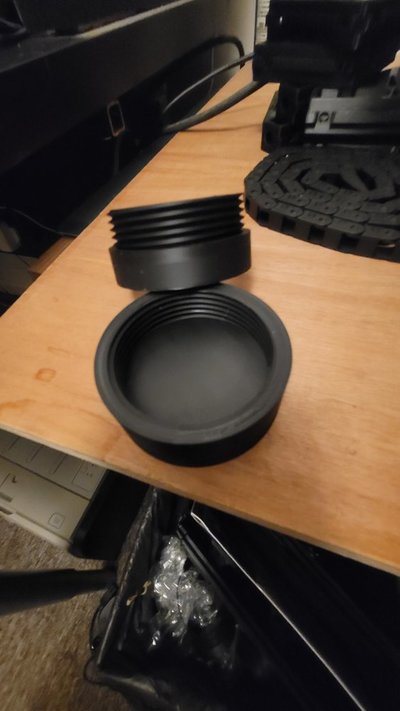Sadly he is selling the finished article not the STL.This bloke lists various one, with and without DTI

I am crossed with a Yorkshire man and a Scots man.
Sadly he is selling the finished article not the STL.This bloke lists various one, with and without DTI



Printed some threads the other week... very tight till i put a bit of lube on
Unbelivable difference
So how to the wago’s attach ?
Yeah, I had read some advice to trim them but it's worse than that@indy4x A neat trick I learnt from a Fusion 360 tutorial was to offset the male and female thread flanks by a suitable amount (maybe only 0.1 mm) to give the thread a running clearance.
I wish, see my other post, internal thread is off by 2mm on the dia, no amount of lube is going sort that outPrinted some threads the other week... very tight till i put a bit of lube on
Unbelivable difference

I am crossed with a Yorkshire man and a Scots man.


I have tweaked the horizontal in cura.. petg is now within about 4 thou.. not printed anything tall enough to touch the vertical yet
You can scale your way out, by just scaling X and Y.Calibration of your printer scaling is not the issue. Most people print at 0.2mm layer height (8thou). Those layers are stepped but still have to follow a curved or sloped line and there are PLENTY of those in a thread fastener. If both male and female thread slicing tolerance are set to "medium" i.e. the physical print always overlaps the desired virtual design, then they will always intersect when you screw them together.
I would suggest you can't "scale" your way out of that issue because that will affect pitch (depending on orientation) but since it is possible, let's just say "there be dragons".
You can scale your way out, by just scaling X and Y.
Off course, whether that is a suitable solution, depends on what you're trying to achieve.




